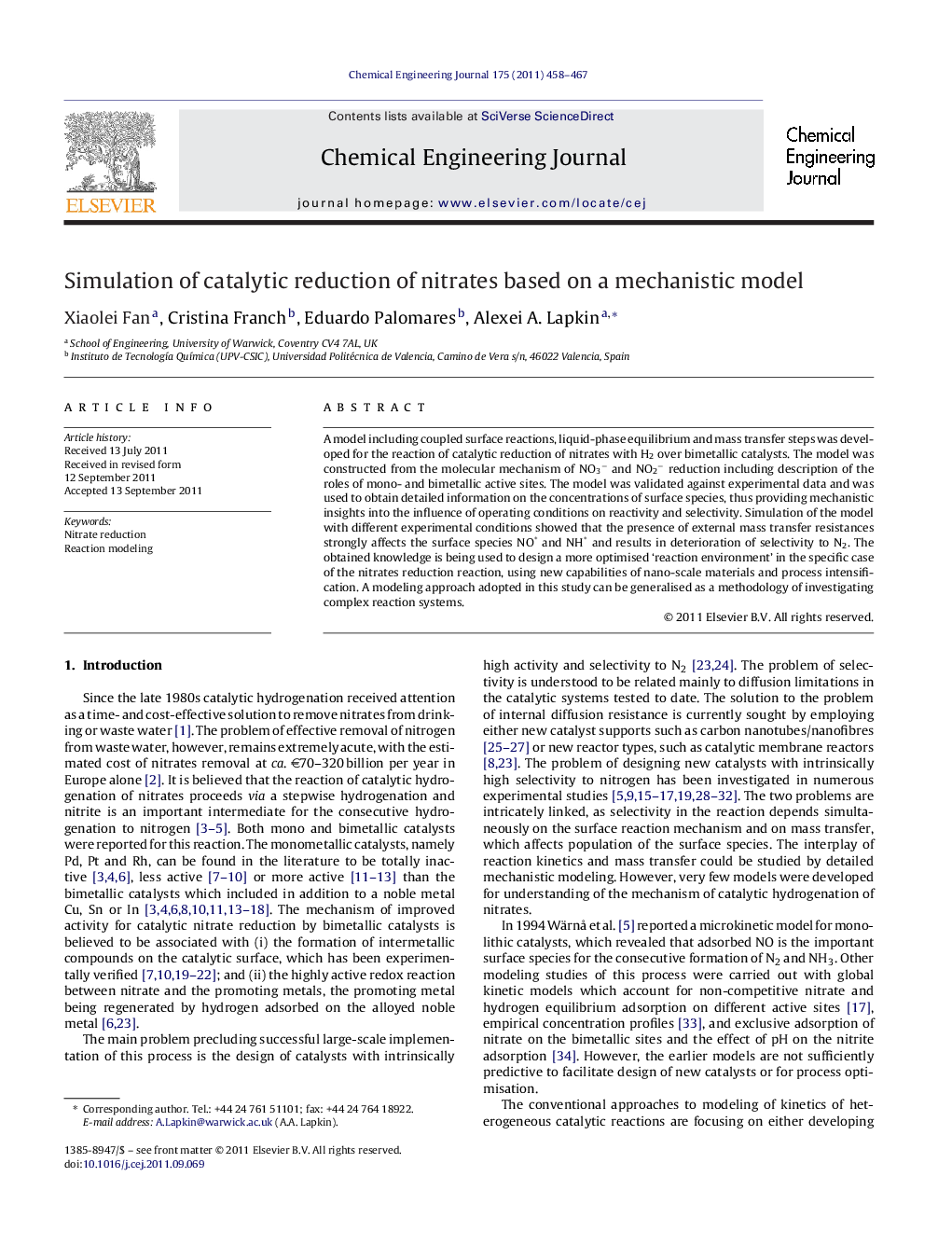| Article ID | Journal | Published Year | Pages | File Type |
|---|---|---|---|---|
| 151003 | Chemical Engineering Journal | 2011 | 10 Pages |
A model including coupled surface reactions, liquid-phase equilibrium and mass transfer steps was developed for the reaction of catalytic reduction of nitrates with H2 over bimetallic catalysts. The model was constructed from the molecular mechanism of NO3− and NO2− reduction including description of the roles of mono- and bimetallic active sites. The model was validated against experimental data and was used to obtain detailed information on the concentrations of surface species, thus providing mechanistic insights into the influence of operating conditions on reactivity and selectivity. Simulation of the model with different experimental conditions showed that the presence of external mass transfer resistances strongly affects the surface species NO* and NH* and results in deterioration of selectivity to N2. The obtained knowledge is being used to design a more optimised ‘reaction environment’ in the specific case of the nitrates reduction reaction, using new capabilities of nano-scale materials and process intensification. A modeling approach adopted in this study can be generalised as a methodology of investigating complex reaction systems.
► A mechanistic model of catalytic reduction of nitrates in water has been developed. ► Relationship between mass transfer and elementary surface reactions were revealed by the model. ► Model simulations predict optimal operating conditions for maximum selectivity.
